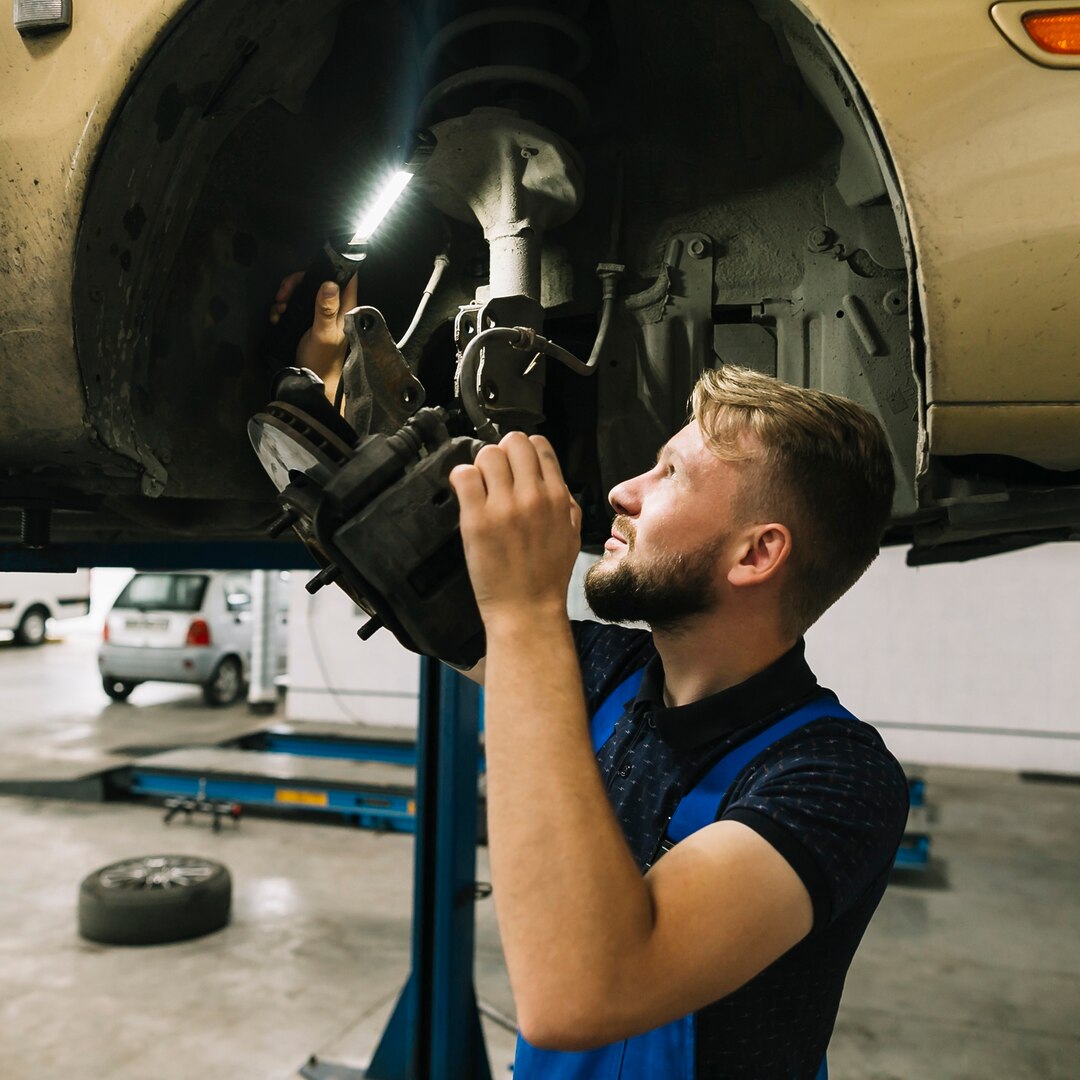Your car’s shock absorbers play a vital role in ensuring a smooth and stable ride by controlling the movement of the suspension system. Over time, shock absorbers can wear out due to continuous use and exposure to various road conditions. Recognizing the signs of worn-out shock absorbers is crucial for maintaining vehicle safety, comfort, and performance. Here are ten common signs that indicate your car’s shock absorbers may need replacement:
- Excessive Bouncing: If your car bounces excessively after hitting bumps or uneven road surfaces, it may be a sign that the shock absorbers are worn out. Healthy shock absorbers should provide a smooth and controlled ride, even over rough terrain.
- Poor Handling and Stability: Worn shock absorbers can compromise your car’s handling and stability, especially during turns or sudden maneuvers. You may notice excessive body roll, swaying, or instability when driving at high speeds or navigating curves.
- Uneven Tire Wear: Shock absorbers help maintain proper tire contact with the road surface, ensuring even tire wear. If you notice uneven wear patterns on your tires, particularly bald spots or excessive wear on certain areas, it may indicate shock absorber problems.
- Knocking or Clunking Sounds: Strange noises, such as knocking, clunking, or banging, coming from the suspension system when driving over bumps or rough roads, are often a sign of worn-out shock absorbers. These noises occur due to loose or damaged components within the shock absorber assembly.
- Nose Diving During Braking: If your car’s front end dives forward excessively when braking, it may indicate worn front shock absorbers. This can affect braking performance and increase stopping distances, posing a safety risk, especially in emergency situations.
- Tail Squatting During Acceleration: Similarly, if the rear end of your car squats down excessively during acceleration, it may indicate worn rear shock absorbers. This can affect traction and stability, particularly when accelerating from a standstill or towing heavy loads.
- Visible Fluid Leaks: Inspect your car’s shock absorbers for any visible signs of fluid leaks, such as oil or hydraulic fluid dripping from the shock absorber housing. Fluid leaks indicate internal seal failure and compromised shock absorber performance.
- Excessive Vibrations: Vibrations felt through the steering wheel, floorboard, or seats, especially at higher speeds, may indicate shock absorber problems. Worn-out shock absorbers can cause excessive vibration and make the ride feel rougher than usual.
- Rough or Harsh Ride Quality: If your car’s ride quality feels rough, harsh, or uncomfortable, it may be due to worn shock absorbers. You may feel every bump, dip, or imperfection in the road, leading to a less enjoyable driving experience.
- High Mileage or Age: As a general rule of thumb, shock absorbers should be replaced every 80,000 to 160,000 kilometers, depending on driving conditions and vehicle usage. If your car has surpassed this mileage or is over ten years old, it may be time to consider replacing the shock absorbers as part of routine maintenance.
Recognizing the signs of worn-out shock absorbers is essential for maintaining vehicle safety, comfort, and performance. If you notice any of these ten signs, it’s crucial to have your car’s shock absorbers inspected by a qualified mechanic and replace them if necessary. By addressing shock absorber problems promptly, you can ensure a smooth and stable ride and prolong the lifespan of your vehicle’s suspension system.











